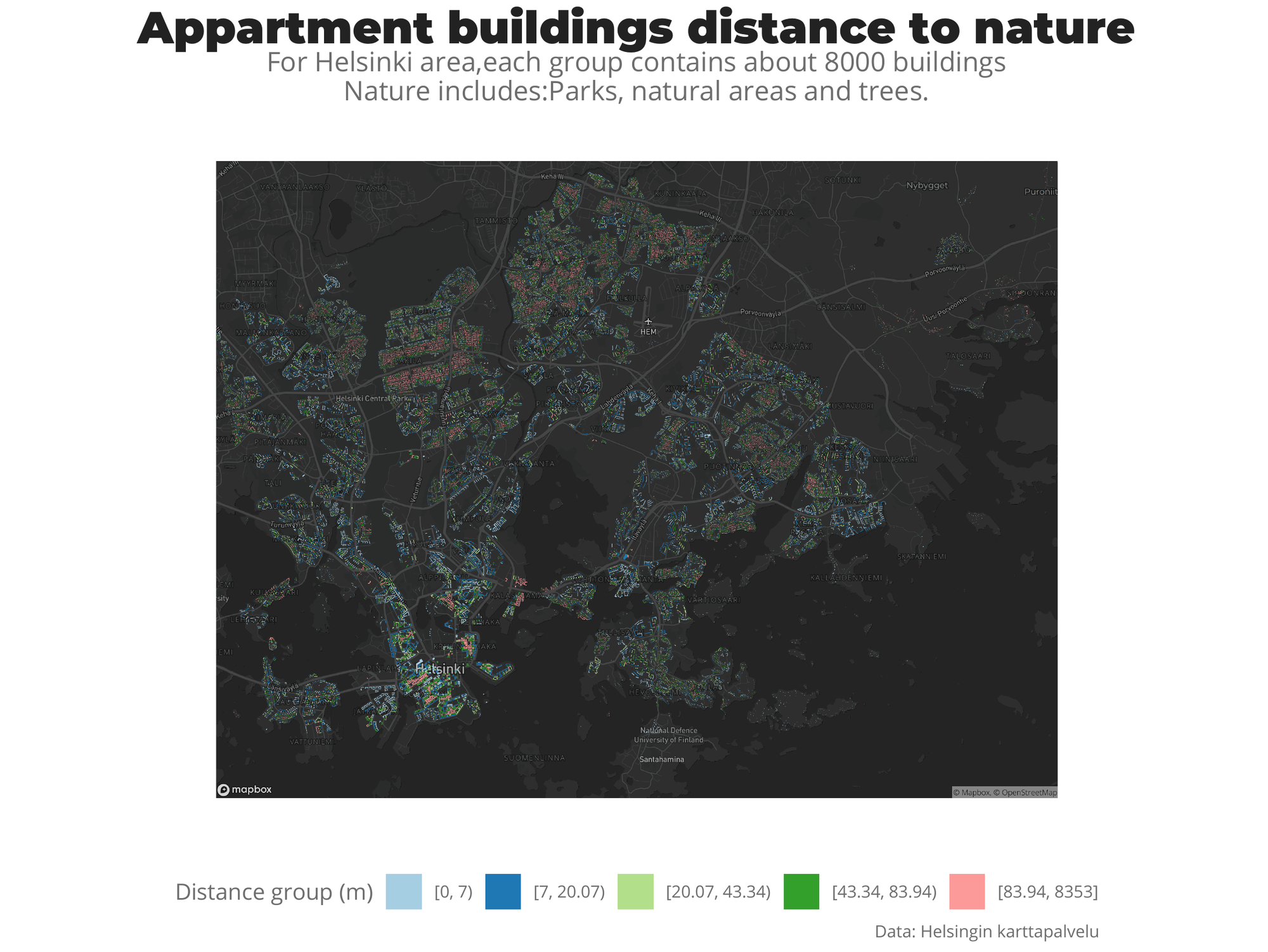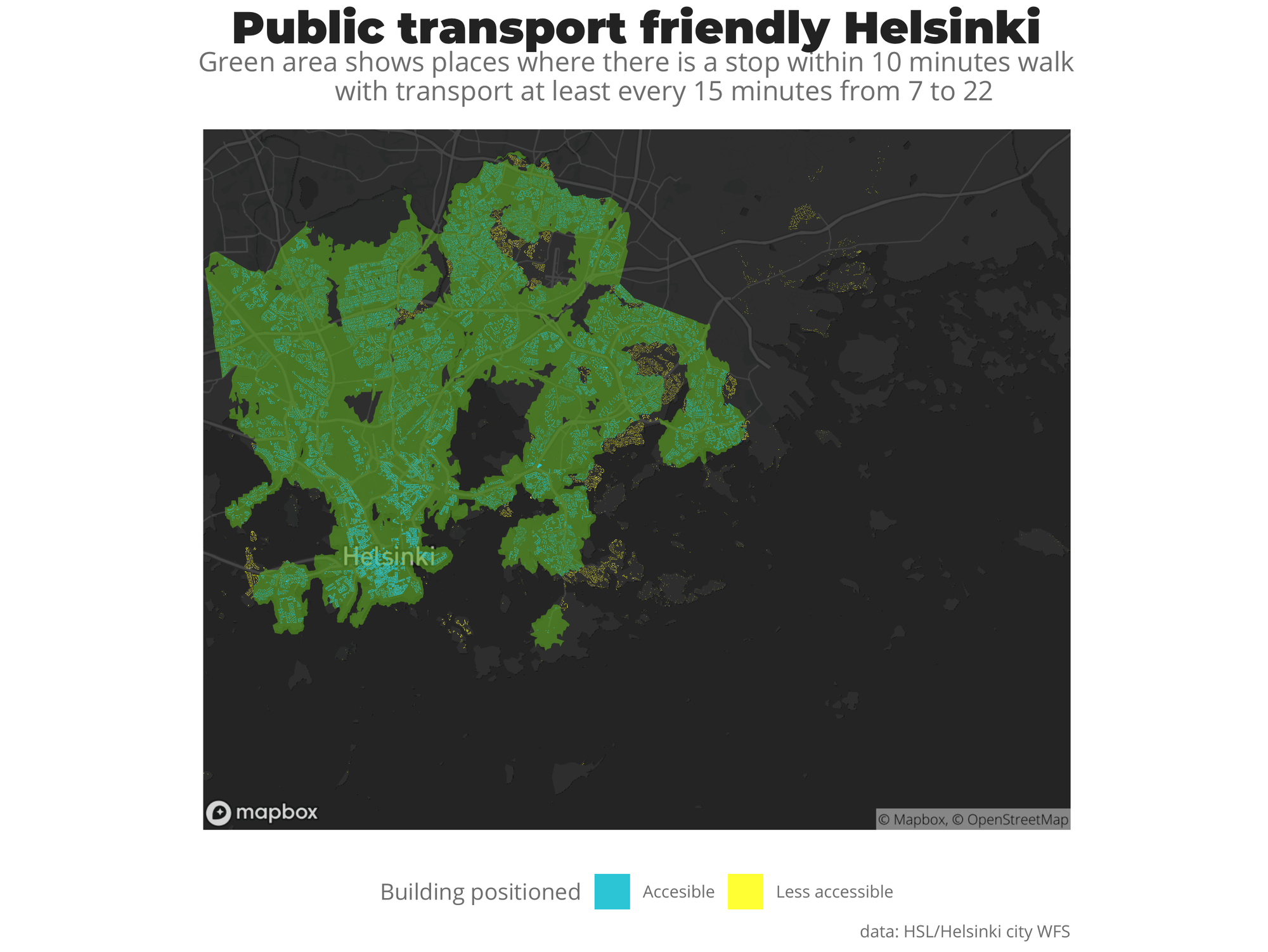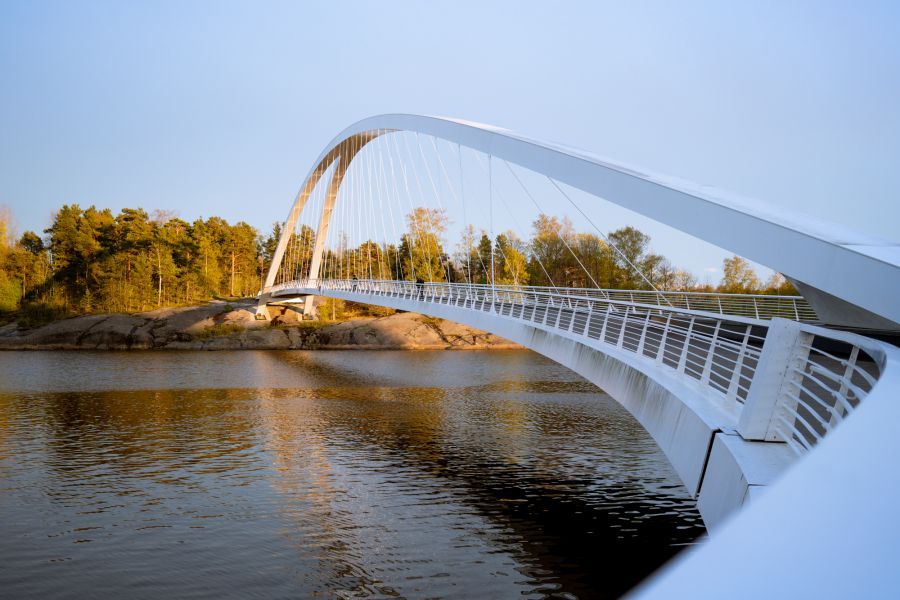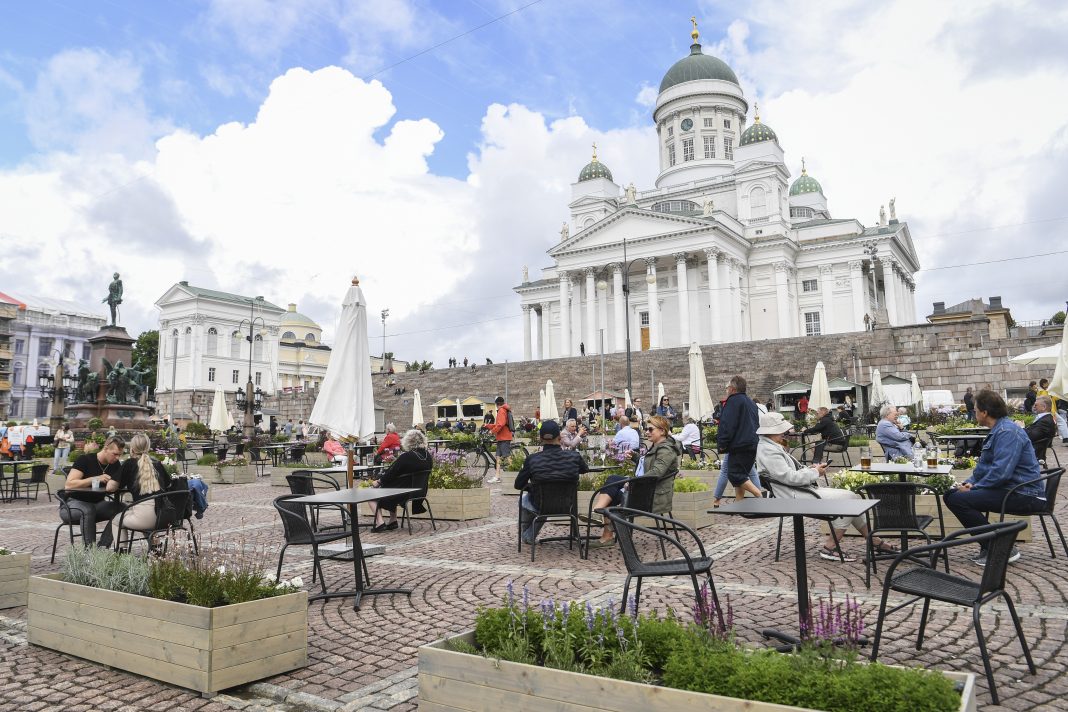Helsinki, the happy city? [Datata #3]
I think so, Helsinki is such a complete city. Explore my analysis of Helsinki and learn some basic about urban planning and what makes Helsinki special.
![Helsinki, the happy city? [Datata #3]](https://images.unsplash.com/photo-1611570266699-4b201348481b?crop=entropy&cs=tinysrgb&fit=max&fm=jpg&ixid=MnwxMTc3M3wwfDF8c2VhcmNofDU2fHxIZWxzaW5raXxlbnwwfHx8fDE2MTcwNzYwNzE&ixlib=rb-1.2.1&q=80&w=1200)
Finland is again the happiest country in the world supposedly. I have been living in its capital, Helsinki for over a year now. While I cannot answer if it is the happiest city, I have done some data analysis to answer how different factors effect on how happy we are in the city (nature, transport, convenience and social encounters). Consider this as an introduction to urban planning taking Helsinki as an example, backed by data. Lots of the ideas are inspired by the book Happy city by Charles Montgomery.
I can feel that Helsinki is a happy city, but how does Helsinki rate on the most important factors contributing to making a city happy?
Nature proximity
Cities tend to be crowded, full of cars and noise, which can make us overstimulated and exhausted. However, having the possibility to escape to a quiet public place full of nature can have very positive results. And cities need green in sizes S, M, L and XL, from bushes and trees to parks and forests.
Finland is mostly covered by forest. Majority of Finns have a forest in their backyard. I used spatial analysis to take each residential building in the city and calculated the distance to the closest piece of nature.

80% of the buildings have nature closer than 74 meters away, and 95% closer than 140 meters away.
Going to nature is a great way to recharge your batteries, and you can certainly always see people walking in the nature. The involuntary attention we give to nature, is effortless, like a daydream. If you are stuck with a project or task or in a bad mood, going for a short walk might help immensely.
And in a country as cold as Finland people are not intimidated by the weather. They might be unconsciously influenced by a Norwegian concept called Friluftsliv, which means a commitment to celebrating time outdoors, no matter the weather forecast.
In Helsinki nature is all around and newcomers are often impressed by it. It gives the city a calmer rhythm that is much appreciated.
Convenience
"We have traded conviviality for the convenience of those who wish to experience streets as briefly as possible" - Charles Montgomery
It is often the case that streets are designed for cars, or around the roads, but the truth is that public life begins when we slow down, when we walk our streets.
Covid has definitely had impact in the way we move. Now I barely go to the center and spend most of my time in the same neighborhood, where I can fulfill almost all of my needs. And I love it, I don't need to depend on public transport or need to own a car.
"15-minute city is a place where the rhythm of the city reflects the pace of humans (not cars), every square meter serves multiple purposes, and no one needs to commute elsewhere to fulfill basic daily needs." - Carlos Moreno
This led me to calculating all of the "15-minute city" areas within Helsinki, I considered the following as essential to fulfill basic daily needs:
- Food stores
- School/Preschool
- Pharmacy
- Restaurant
- At least one mixed-use building (where companies exist)
- Within reach to nature
Then I calculated the isochrones (area accessible from a point within a certain time threshold) where all of those services are accessible from any point within 15 minutes. In case the services might be in opposite sides of the isochrone I calculated an 8-minute radius.
We can see that there are multiple "15-minute cities" in Helsinki, and some of those overlap each other, especially in the center. Many of those exist due to shopping centers where the stores, pharmacies and restaurants co-exist, but still a school and nature need to be nearby to be considered a "15-minute city". It is also interesting how some metro stops don't constitute a "15-minute city", when you would assume that services are plenty and building density is high around metro stops.
The concept also affects the life of seniors, if they live in areas with everything far away, they can't get anywhere on foot and that starves them of the casual social encounters that keep people connected and happy.
Public transportation
Commuting by car can be frustrating and difficult, because every day is a new form of misery (weather, traffic jams, accidents etc.). When you are traveling in public transport, service is more predictable and it frees your concentration so that you can listen to your favorite podcast, read some book or scroll through your phone. It is usually also more economical than owning a car. Young people in urban areas have realized this and car ownership has dropped significantly in the last years. Thus, a good and reliable public transport is key for the citizens.
Many transportation planners agree that a bus needs to show up at least every 15 minutes to use it effortlessly. With that in mind I gathered data about all the trips in Helsinki on a Thursday and calculated all the stops where there is at least a route every 15 minutes from 7AM to 10PM. Then I added a green layer to visualize the areas that are within 10-minute walk from those stops.

The results were astonishing: 84.3 % of apartment buildings/houses are in "public transport friendly" area. In yellow you can see the buildings that are not within that area. Much of those less accessible areas are suburban areas (such as Jollas, Marjaniemi, Vartiokylä or Landbo).
Social encounters
"(The city) should enable us to build and strengthen the bonds between friends, families, and strangers that give life meaning" - Charles Montgomery
A city must bring us together, instead of pushing us apart, a city can be designed to make human life the greatest attraction in cities.
A shortlist of places in Helsinki that are great to spark social life/community:
- Töölonlahti

This area in the center very close to the central railway station is a perfect place for a picnic, for renting a boat in the summer or to ski in winter. It is very common in summer to see groups of friends in the grass or going for a walk around the water. Also nearby is Oodi library, which might as well be considered a community space, with many meeting rooms, play rooms, plenty of sitting and lounging space. These kinds of areas are the ones that bring a city to life for its citizens. Check this link for more information and things to do in the area
- Mustikkamaa

An island just a 10-minute walk from Kalasatama metro station. There is a beach, sports fields, doggy park, summer theater etc. A beautiful retreat from the city and perfect place to go with friends or meet new ones. In summer it is very common to see people all around those rocks in the picture above with a drink enjoying the sun.
- Senate square (Covid special)

Great green accesible spaces are obviously a natural choice to meet with people outdoors, but last summer the Senate square was repurposed from tourist location to a restaurant hub. A huge terrace, where you could find many local restaurants in one place, such a great use of the space and lovely vibes in a historical location.
Social isolation is the greatest hazard of city living, so a city designed to make space for people is a must for a happy city. By redesigning city space, you can transform its culture.
Conclusion
Cities do indeed design our lives. And I truly believe Helsinki is positioned to be considered a happy city, not too big or too small of a city, with nature in your doorstep and great services and public transport. Summer is especially superb.
As any city it has its problems, and being a capital, it also has high rents which can make living in Helsinki unaffordable. Even if there are social housings, demand is high, and many people choose to live in the metropolitan area which includes Espoo and Vantaa.
This newsletter was inspired by the book Happy City which describes the elements of a happy city. I just scratched the surface on the topic of Urban planning. At the end of the day, I am a curious person who likes to analyze interesting topics and answer questions through data, which is why I wrote this newsletter. Subscribe for more of such stories.
Also, many thanks to Ivone Arazo (Urban planner and architect) that helped me a lot in bringing this project to life!
"We build the happy city by pursuing it in our own lives and, in so doing, pushing the city to change with us. We build it by living it" - Charles Montgomery